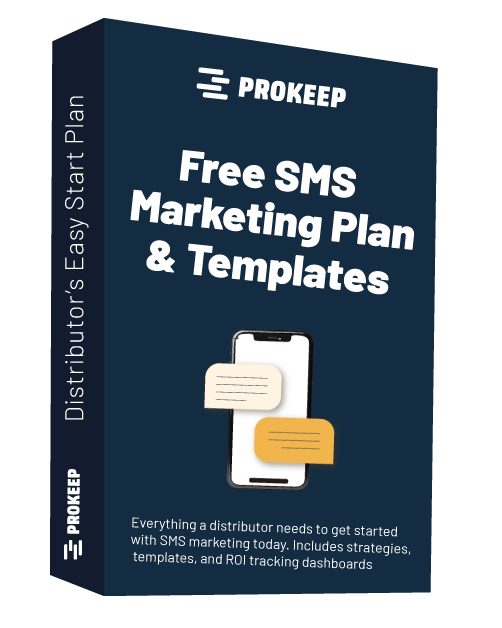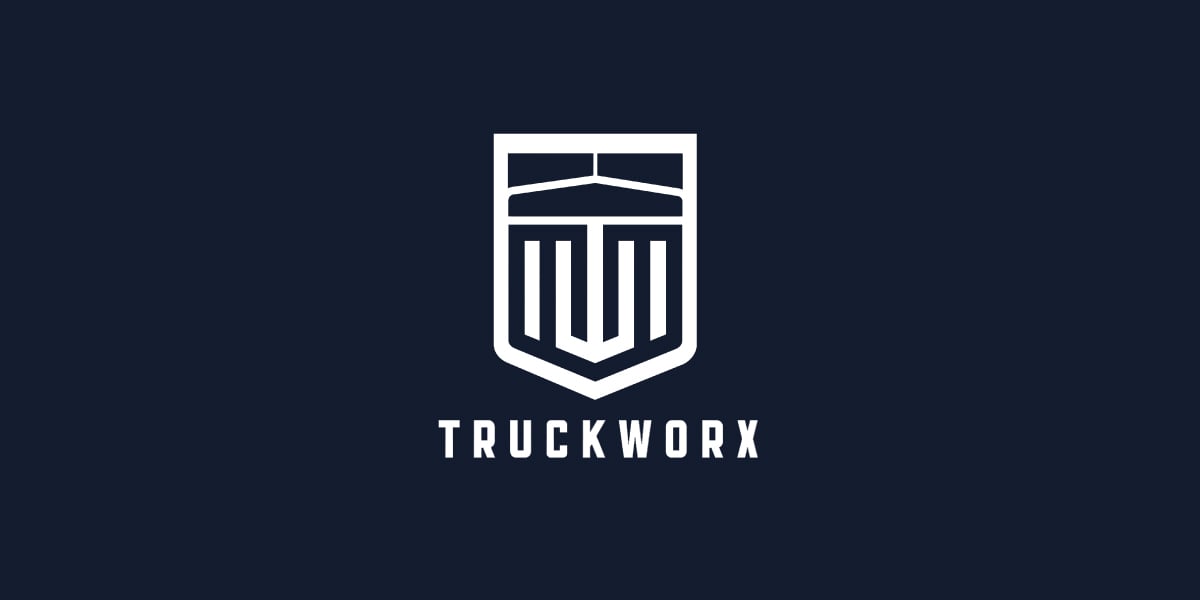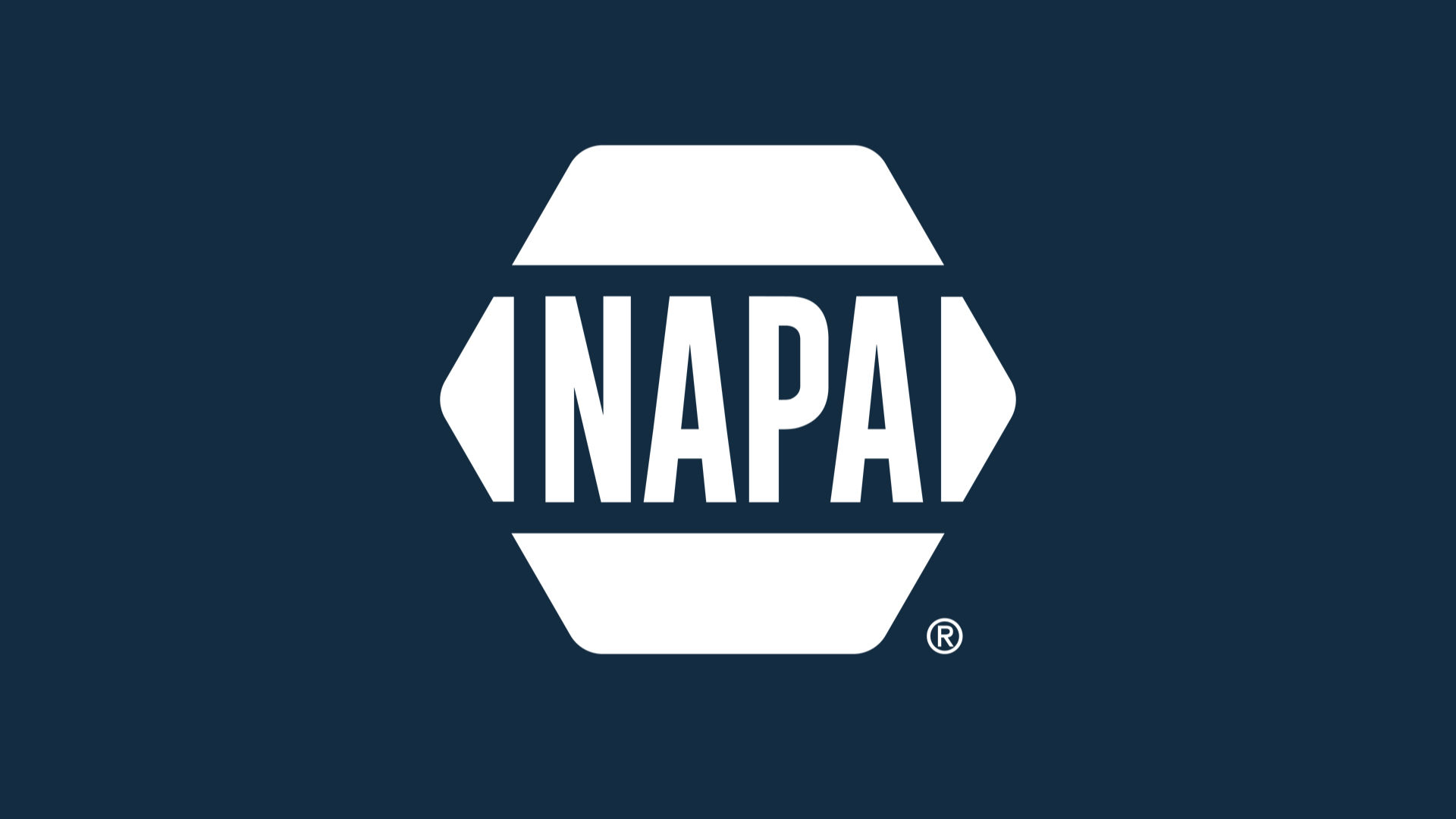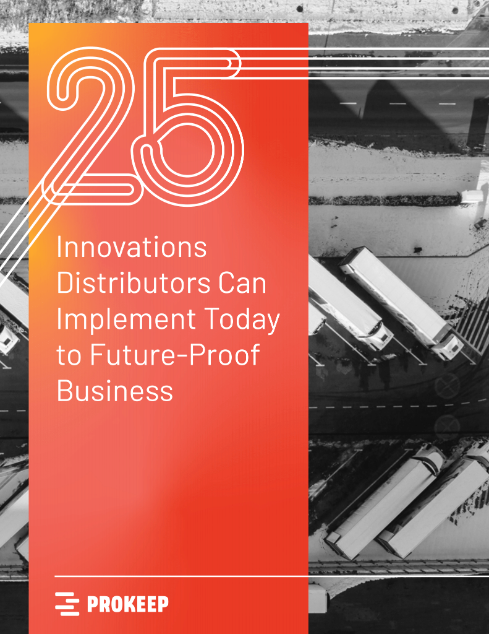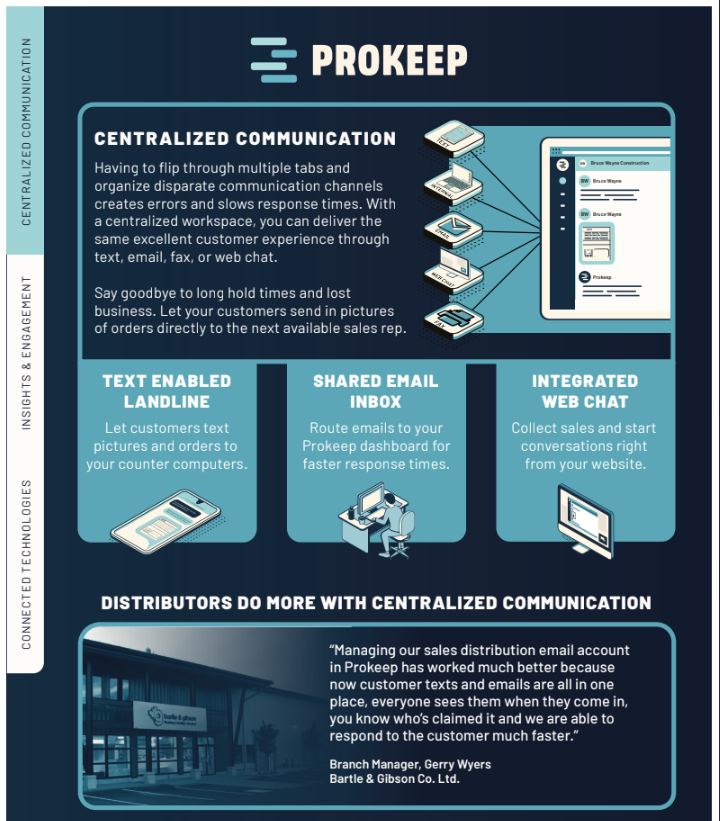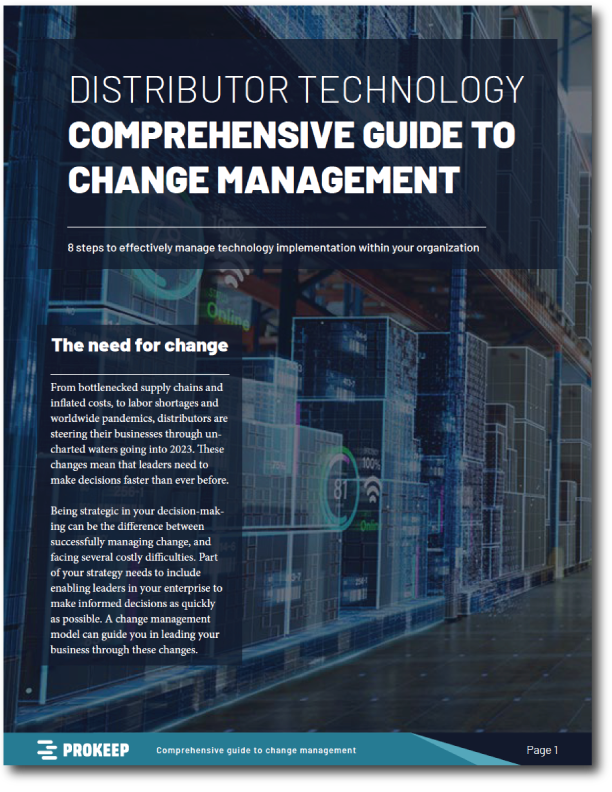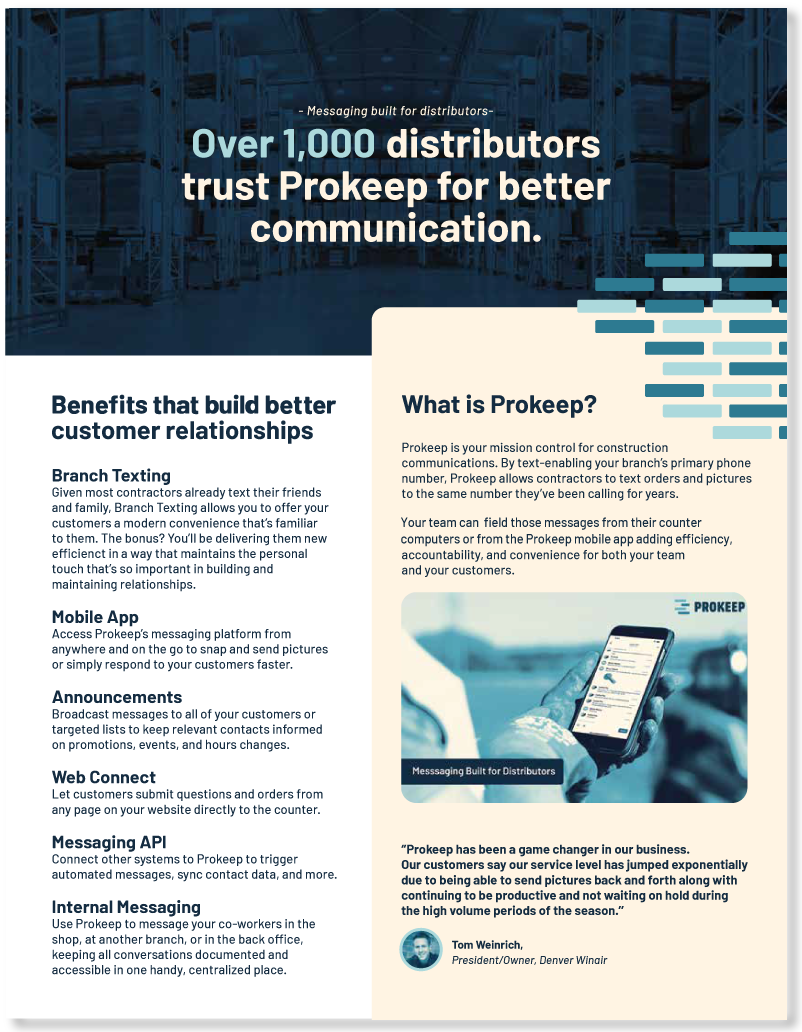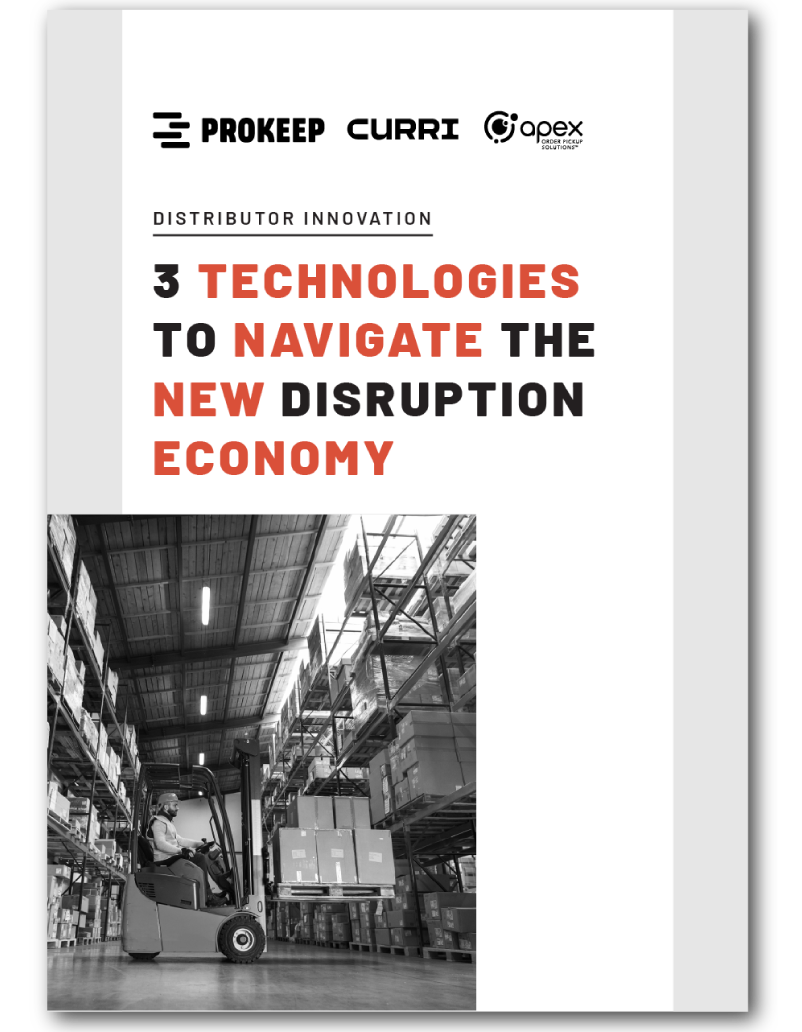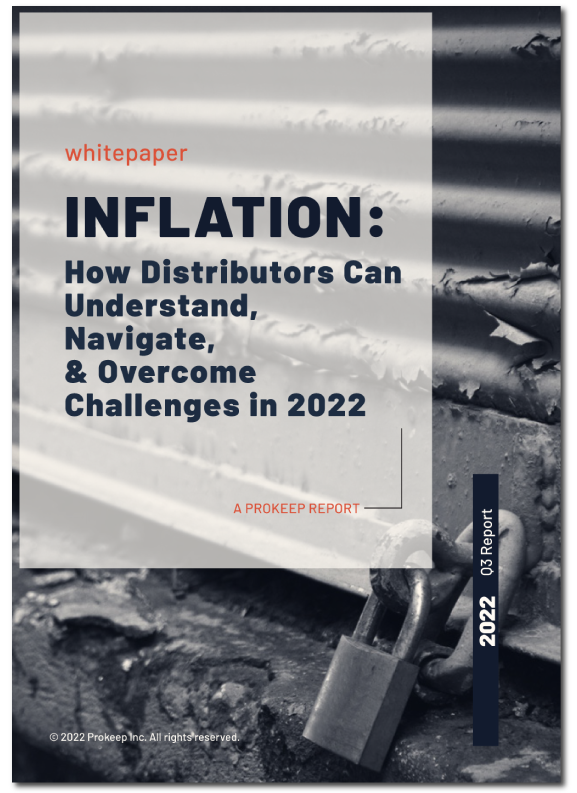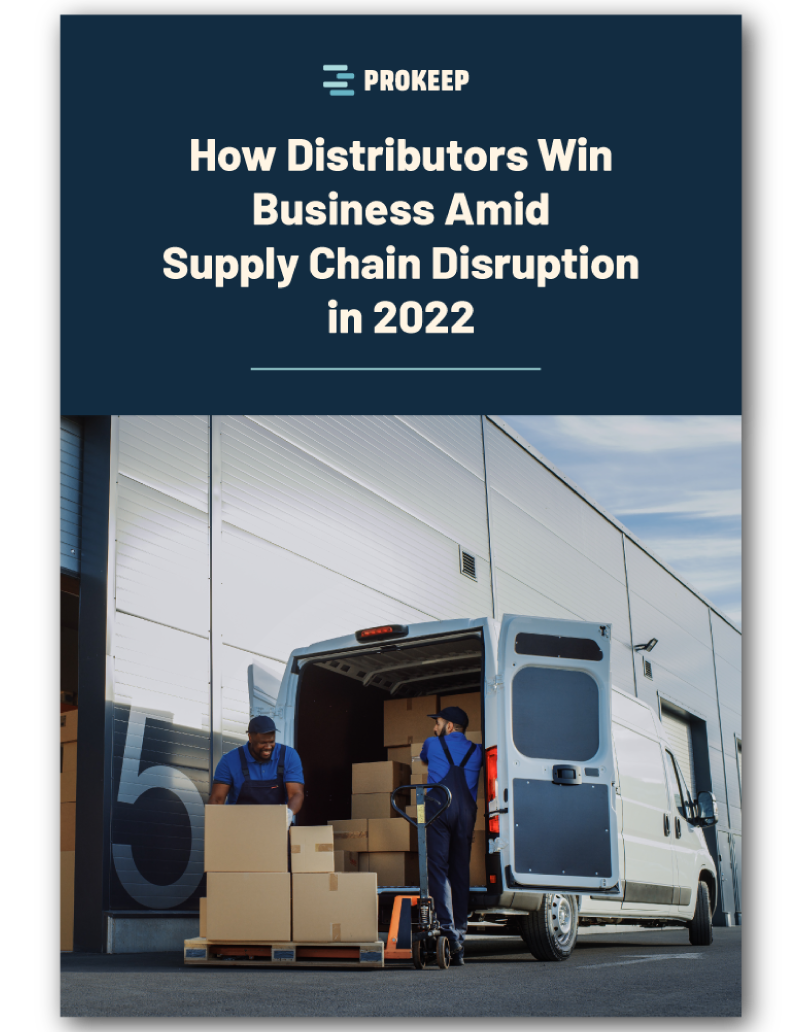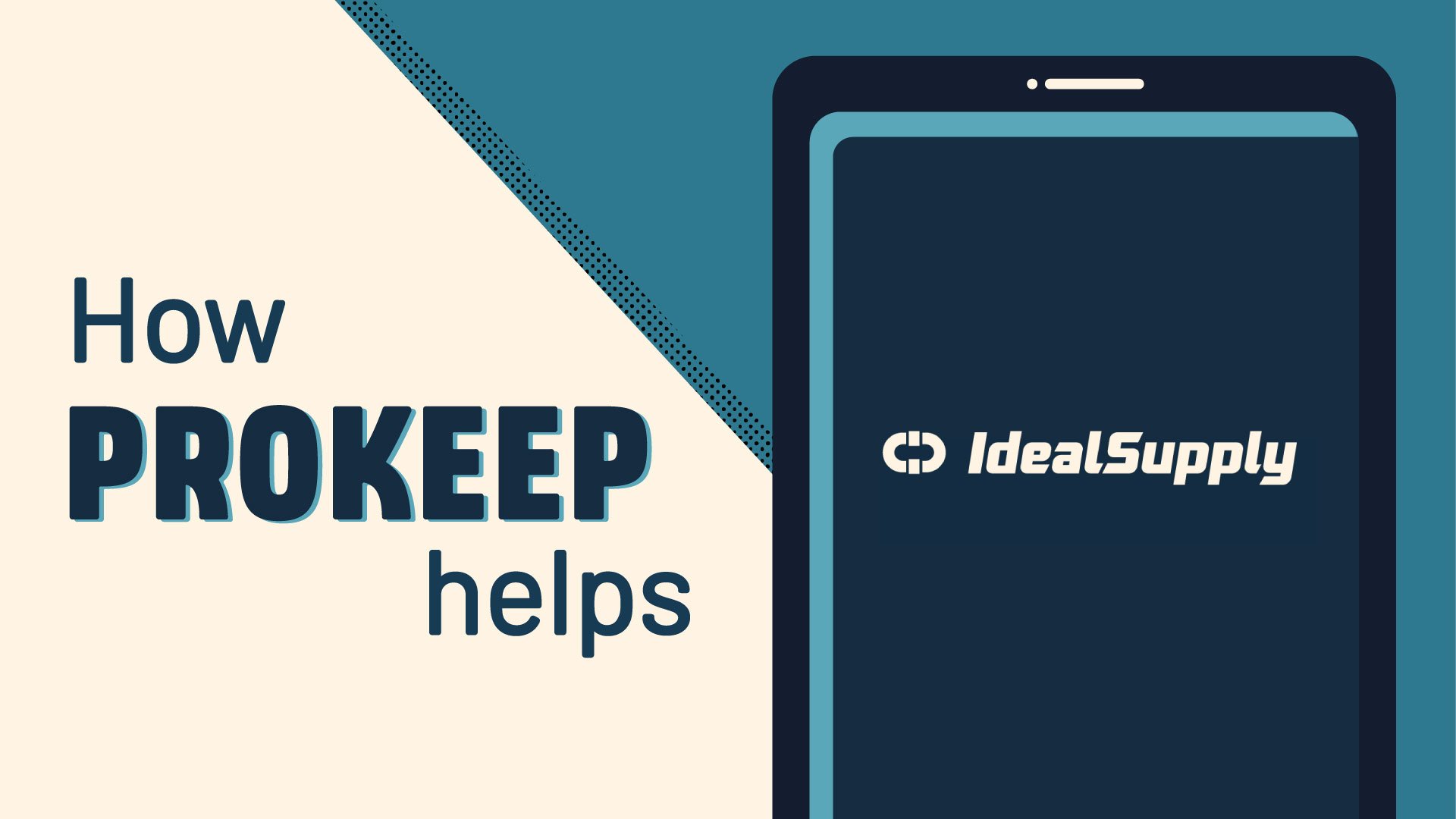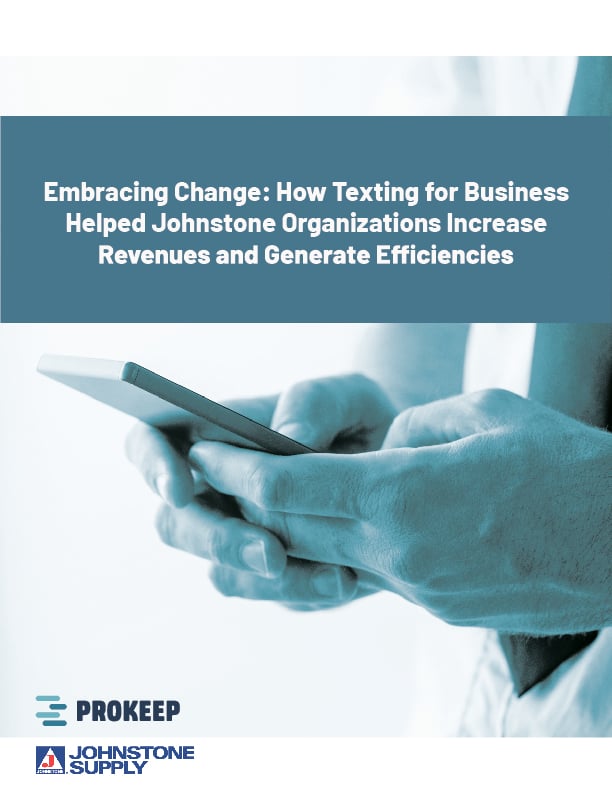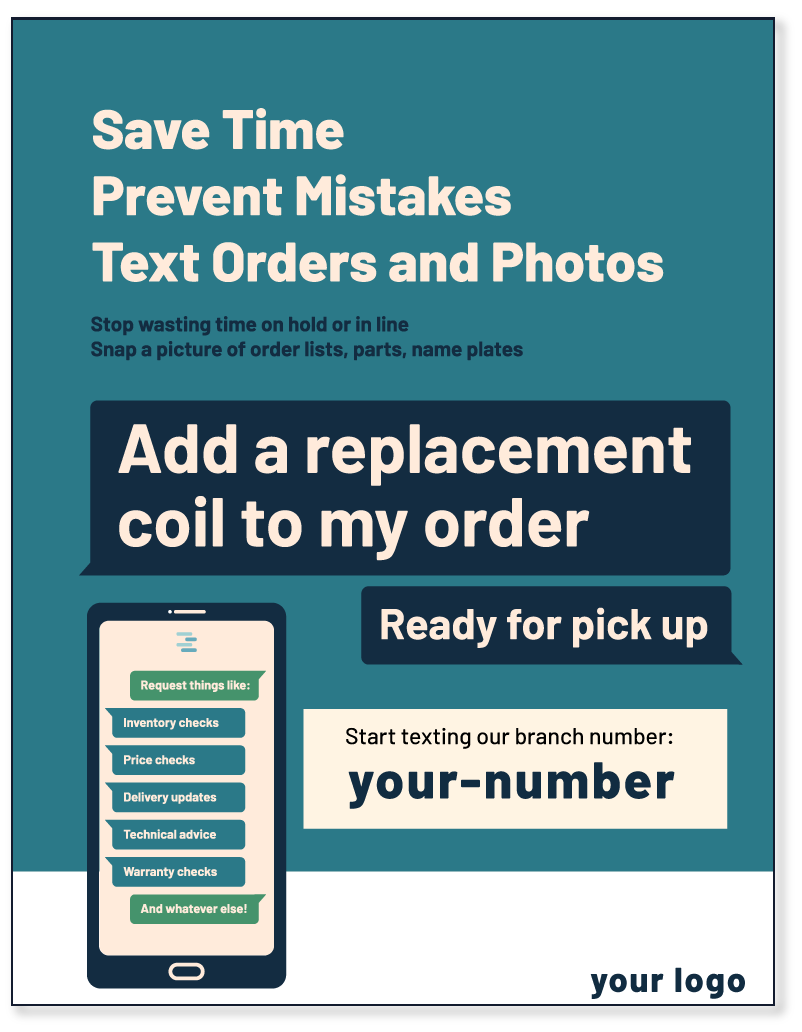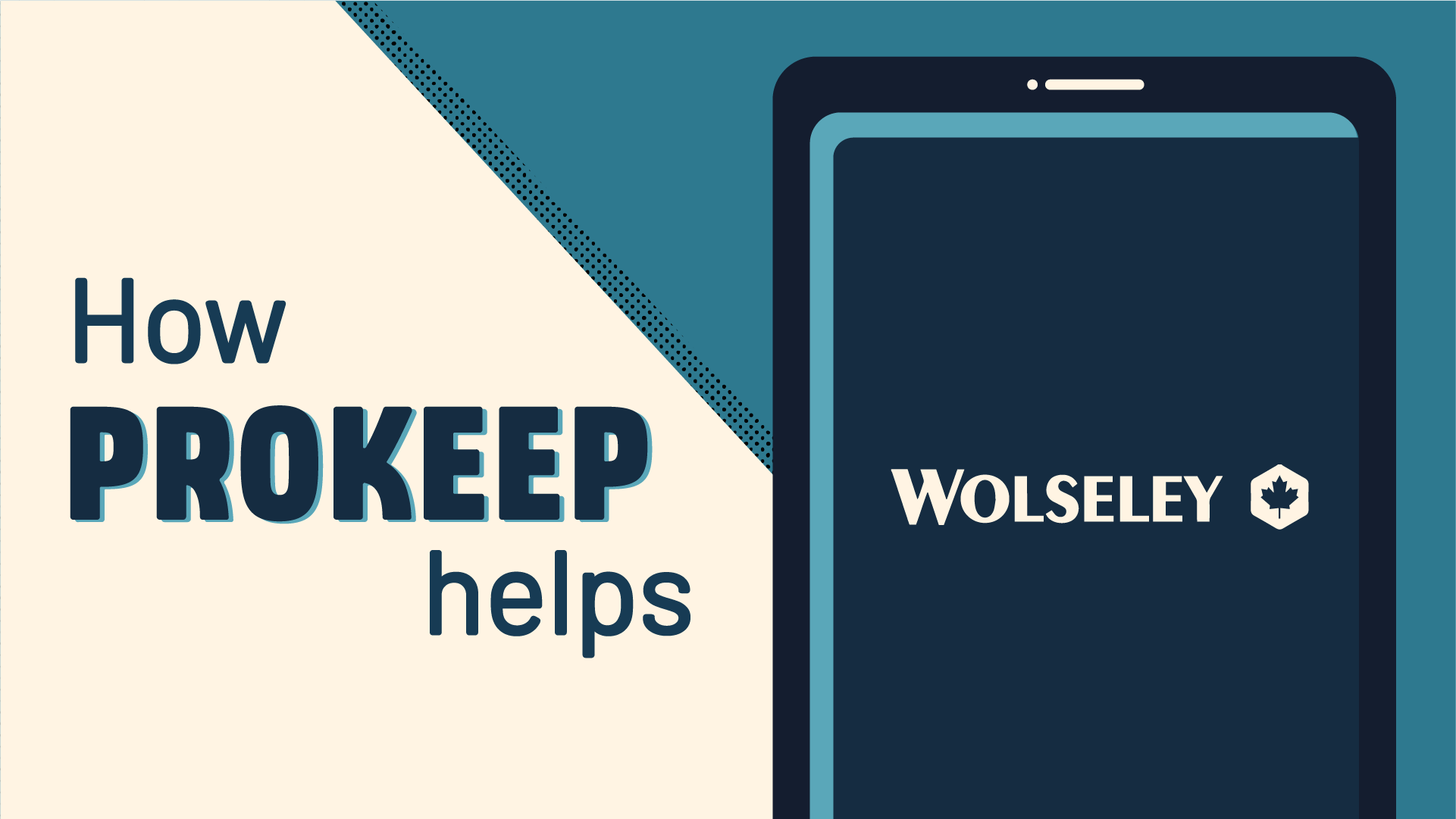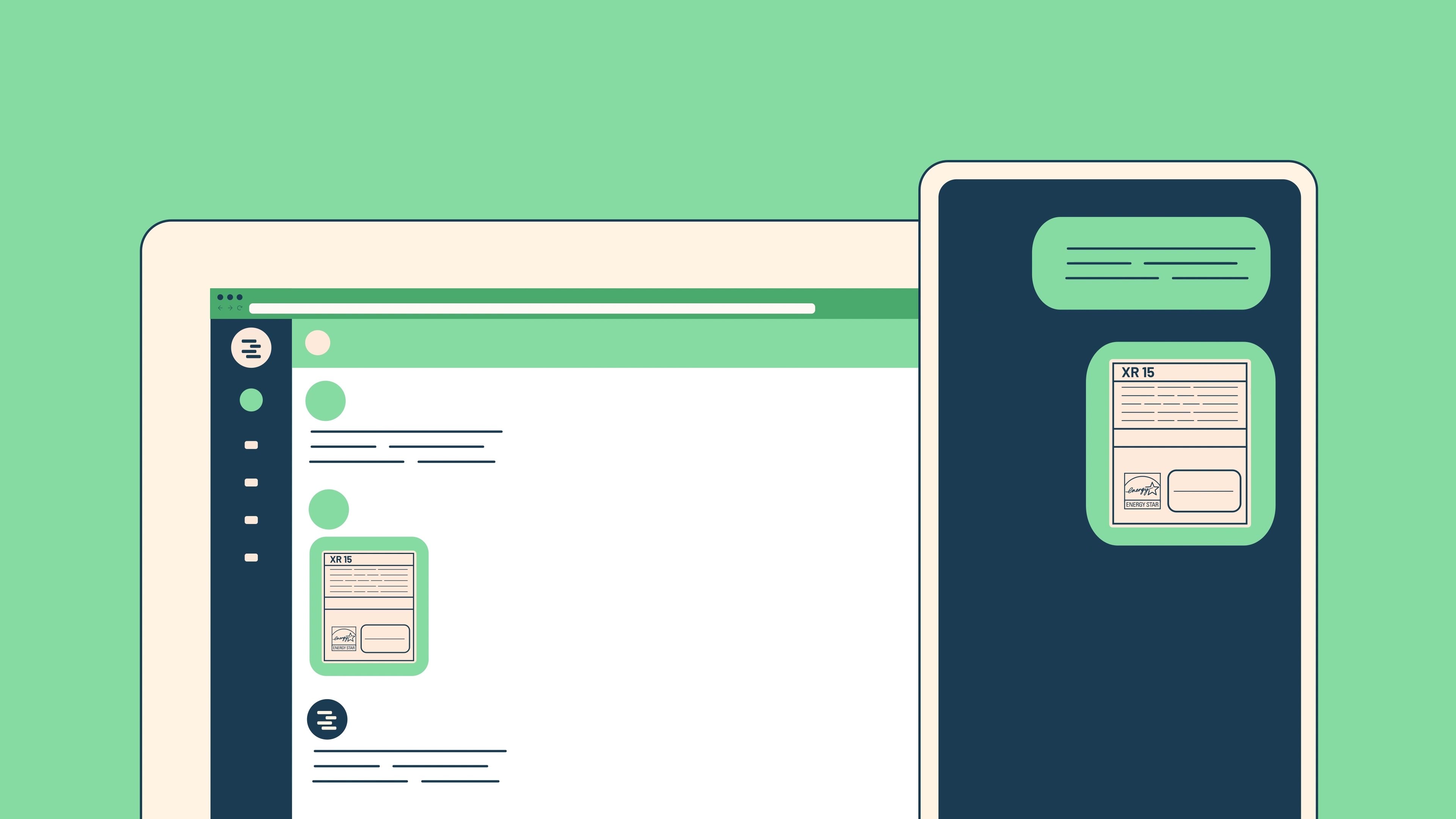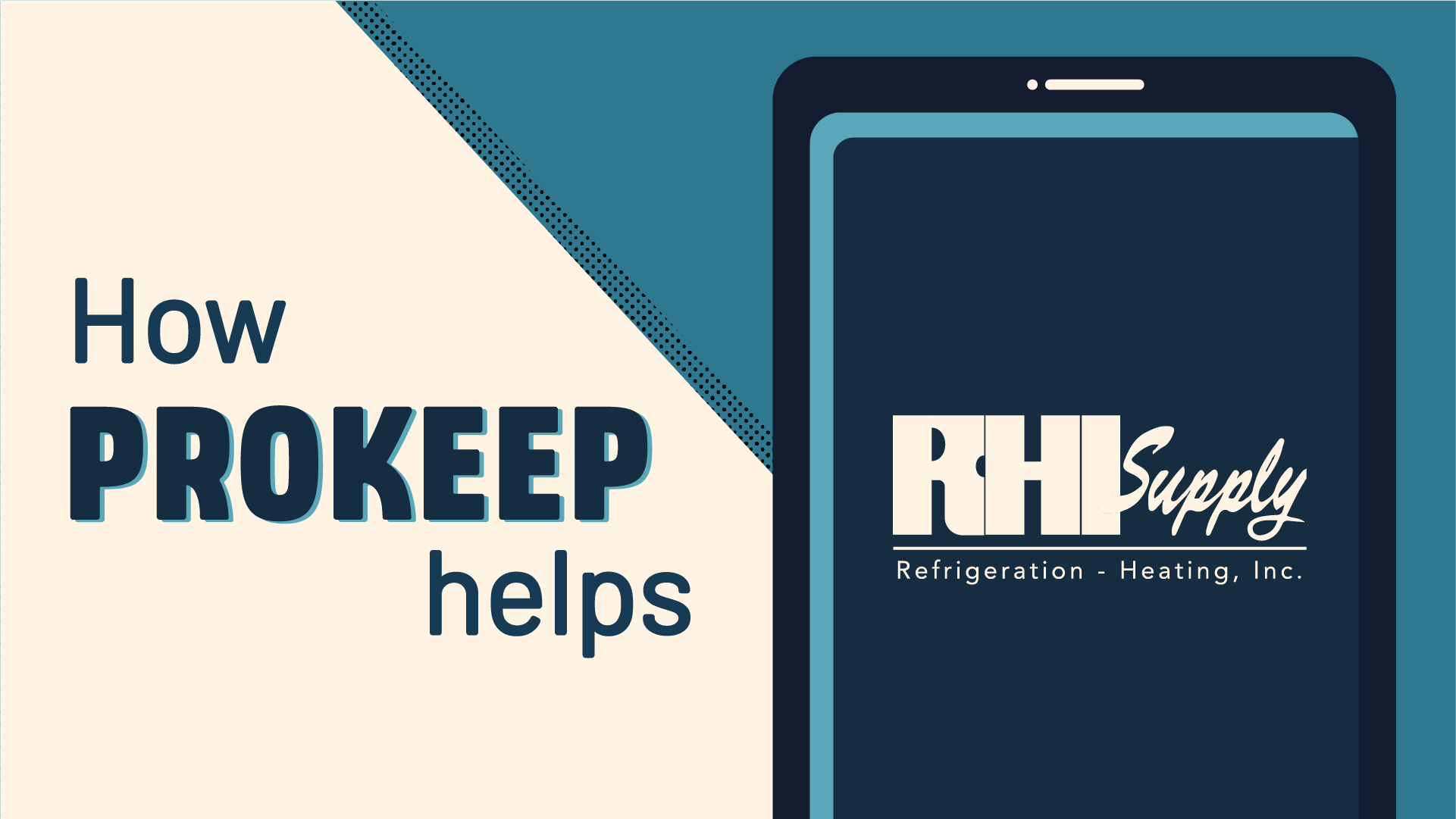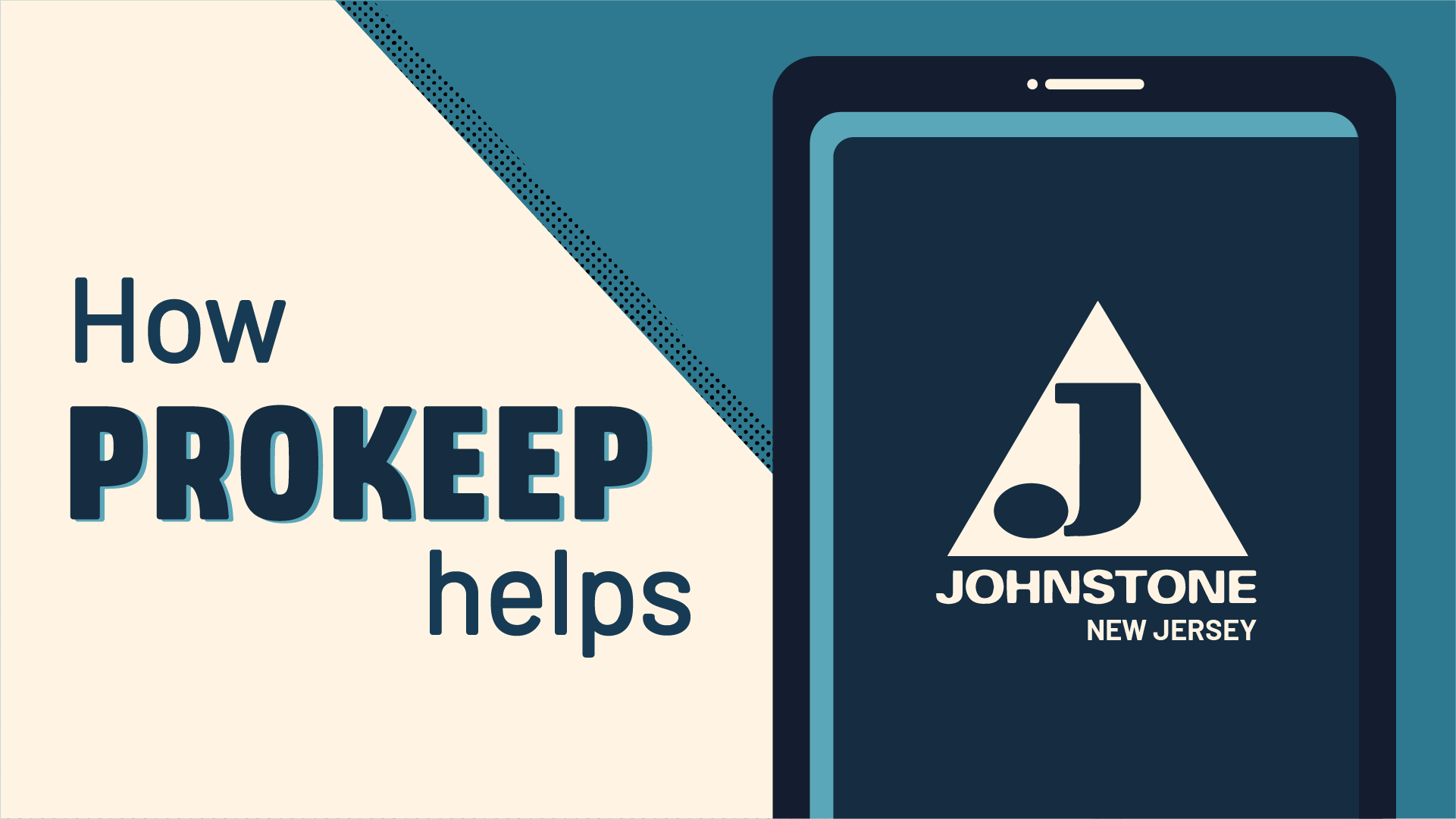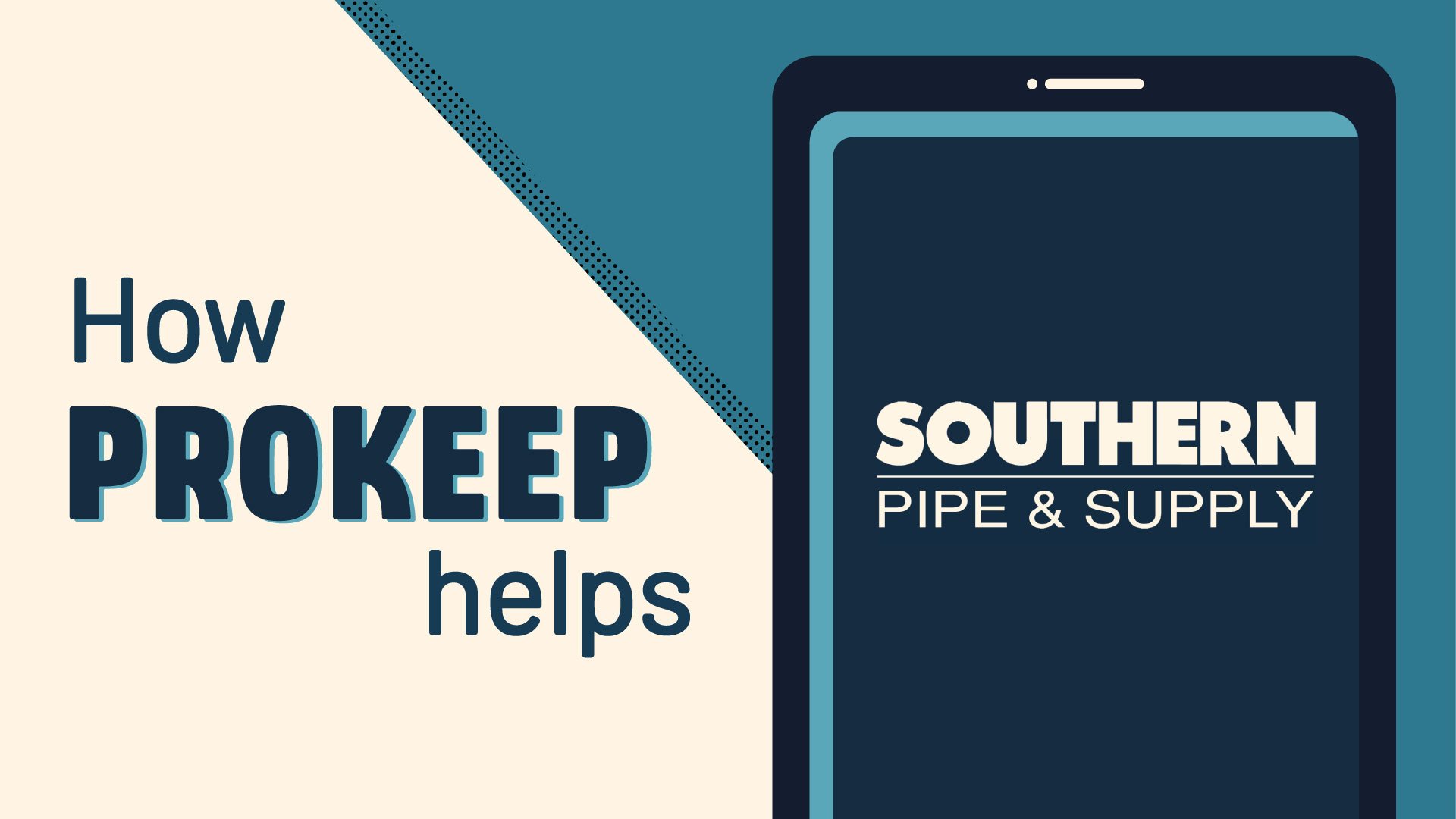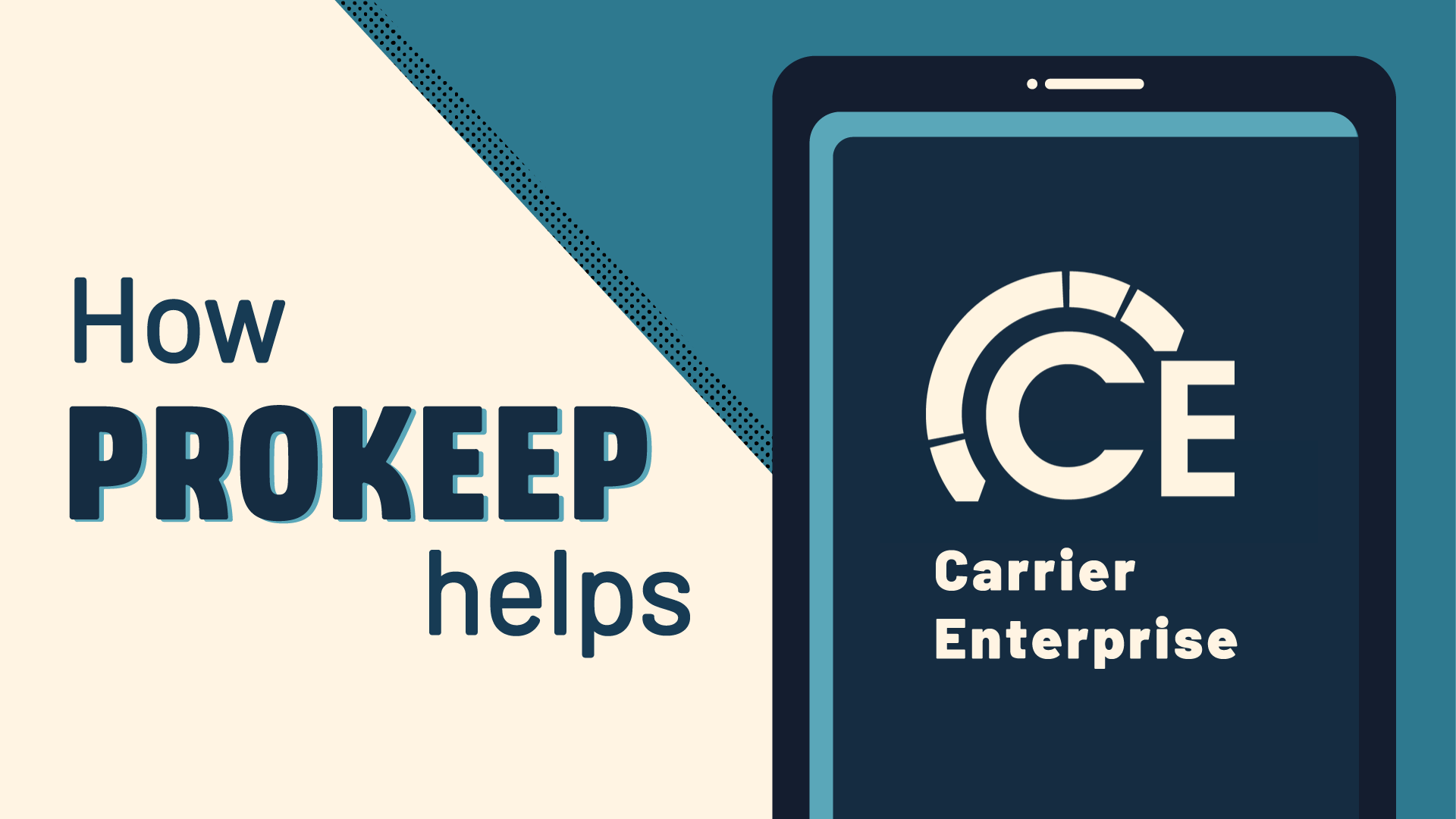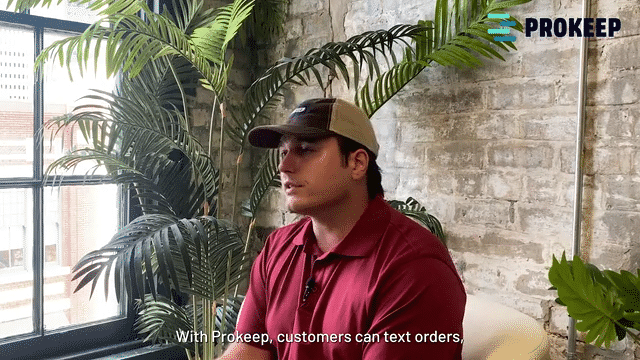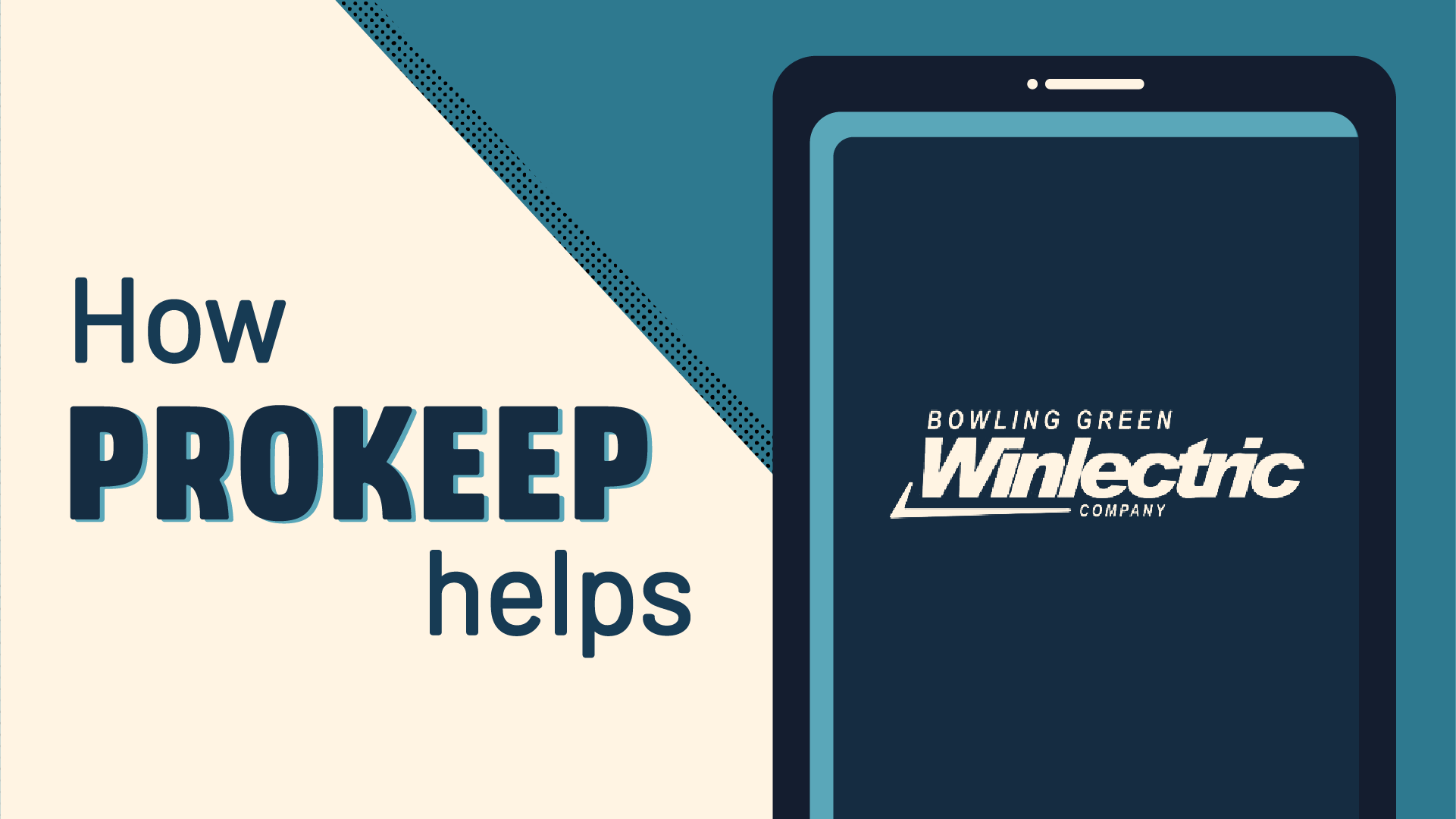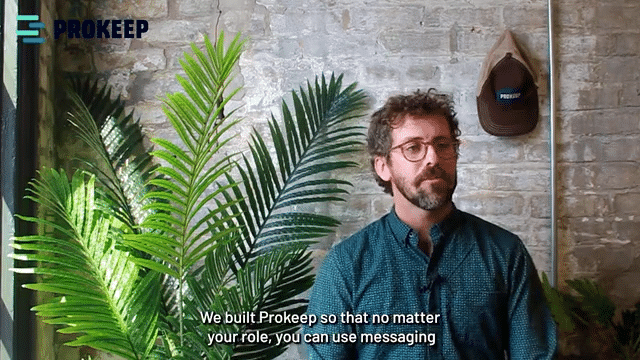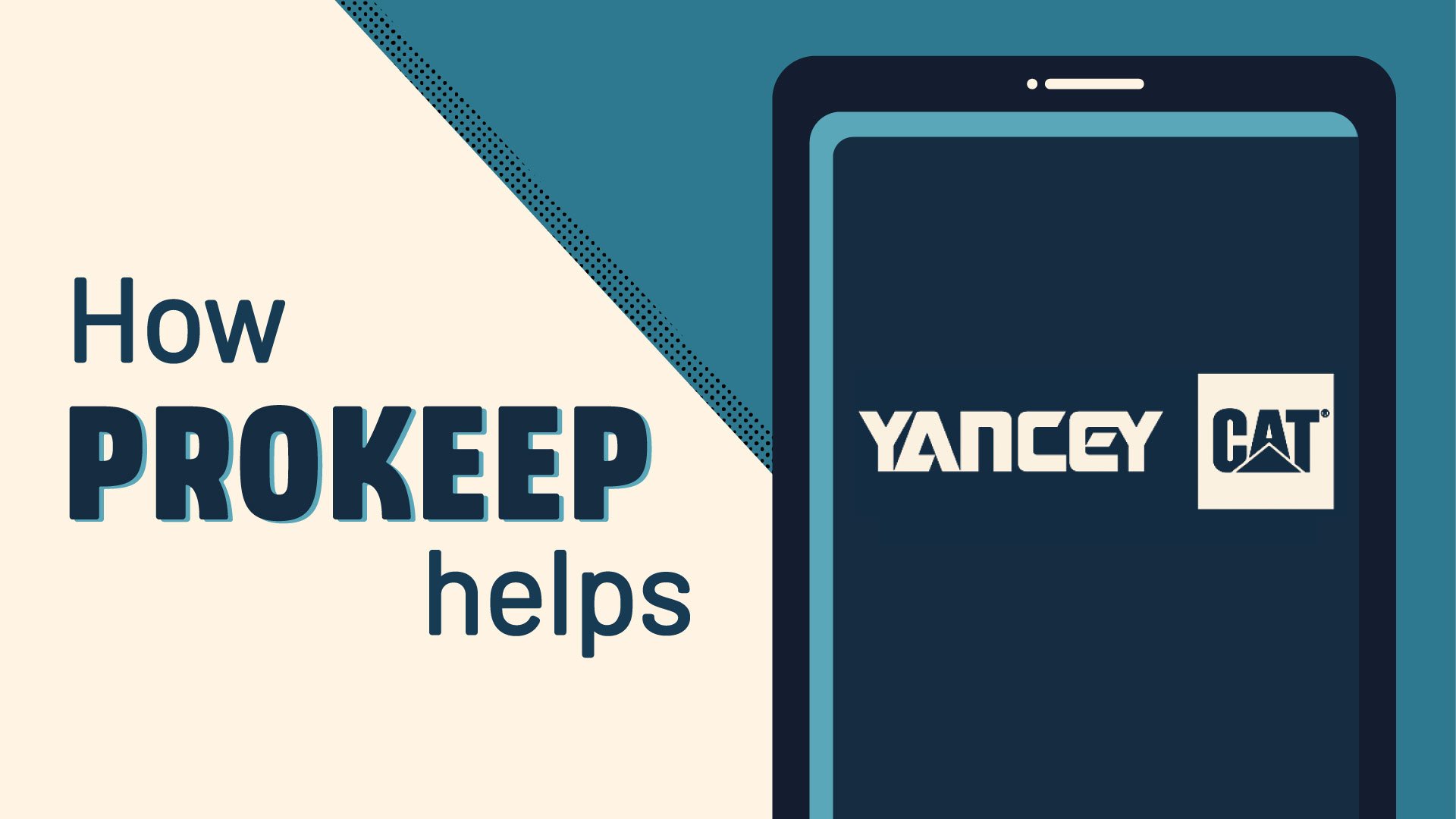Supercharge your customer service: Lessons coming out of COVID-19


Prokeep was proud to partner with HARDI, ACHR The News, and HVAC industry leaders John White (American Refrigeration Supply), and Seth Gordon (Thrifty Supply) to talk about the lessons we learned during COVID-19 in preparation for Cooling Season.
This webinar was chock full of practical ideas that you can start using today, and we’re thrilled to share it with everyone. Here, we’ve broken out our discussion question by question so you can jump to any topic you’re interested in.
- Meet the Panel
- Pivots you should continue post-COVID
- Pivots you should NOT continue post-COVID
- Predicting a date for the return of face-to-face business
- How to Implement, train for, and invest in curbside pickup
- How to overcome inventory issues with better customer communication
- How to win back the business you lost to inventory issues last year
- What's missing in virtual interactions
- Why eCommerce didn’t dominate as anticipated
- Tools & strategies that transformed communication and you should implement
- How distributors survived change during COVID and are embracing change now
- How texting affects operations and order size
- 3 things you’d be crazy not to take away from this webinar
Want to watch the whole thing? Follow the link below.
Meet the Panel
Summary:
The year 2020 was a crazy and challenging one. But now we have turned the page to 2021 and it’s time for distributors to figure out what they’ve learned during this COVID pandemic. A lot of items changed in 2020. Which ones will stick and which ones will we leave behind? To get you ready for this year’s Cooling Season we have John White, President of ARS; Seth Gordon, President of Thrifty Supply; and Jack Carrere, Co-Founder of Prokeep, here to answer some of these questions moderated by Editor-in-Chief of ACHR’s The News, Kyle Gargaro.
Quote:
“Because of COVID, we’ve seen a generational shift in how we use technology and how we interact. Even the CEO of Microsoft is on the record for saying that we’re going to see tiers of digital transformation in the next two months. And distribution, as we’ve seen, is no exception.”
- Jack Carrere, Prokeep
Pivots you should continue post-COVID
Summary:
Distributors were forced to experiment and pivot through COVID to find success as their standard model of business became unviable. As we enter a post-COVID world of business, many distributors are finding that they will continue with some of the pivots they found successful and won’t be returning entirely to their old model of business. On a granular level HVAC distributors have found success in diversifying the way that they communicate with their customers. COVID has forced contractors and distributors alike to expedite change management and learn to utilize new technologies. This has created an incredible opportunity to onboard and test new technologies from texting platforms like Prokeep, to sanitation scheduling and data management tools — all of which have found a foothold in our panelist’s processes moving into 2021 and on.
Quote:
“...There were so many different issues that were brought about because of COVID — you had different regulations restricting the way you did business, and you had different emotions that made customers want to interact with you in different ways. I think people now know they have options. They can call ahead, they can text ahead, they can still walk in when we’re open and have a conversation or buy-in that way.”
- John White, ARS
Takeaways:
- Create more channels for your customers to reach you beyond calling the counter. Use video calls, texting, and other technologies to connect with your customers and teams faster and more frequently.
- Consolidate spreadsheets and emails with cleaning software and project management tools.
- Delegate more consistent cleaning and sanitation regimens for cleaner stores, healthier staff, and happier customers.
- The “buy online, pick up in-store” model exploded and created a great entry point to get customers on board with other digital tools.
Pivots you should NOT continue post-COVID
Overview:
Some tools lived up to their expectations and some were surprising, but others fell flat. One of those technologies was augmented reality video calls. The idea was great, but contractors aren’t using it and probably won’t start to anytime soon. Similarly, we’re going to see a lot fewer virtual gatherings. We’ve lost a lot by not having in-person events, face-to-face networking, and the ability to make deeper connections with our customers. Everyone is looking forward to shaking hands again.
Quote:
“...Whether it's specific technology applications or trying to hold [virtual] gatherings of people to build relationships and team building. I mean, it was great. I think everybody gets an A for effort, but I think the thing that won't stick around is never seeing each other, never being around each other physically.”
- John White, ARS
Takeaways:
- Augmented reality video calls were a great idea but never quite got the adoption foothold to be useful moving forward.
- Though some things can continue to be done virtually, we've really missed something by not having face-to-face human interactions. Digital tools work great transactionally for businesses, but human interaction is vital for learning, networking, and making deeper connections with customers.
Predicting a date for the return of face-to-face business
Overview:
Things are moving fast. Vaccinations are being rolled out aggressively, cities are seeing lower numbers, and states are lowering restrictions on gatherings. Our panel’s prediction is that we’re going to start seeing in-person events returning as soon as this quarter, but with protocols in place to make people feel safe and account for those people that don’t want to return yet. Distributors are investing in better audiovisual equipment so that as in-person events come back, they can still continue to attract the distant audience they have seen at their events over virtual formats.
Quote:
“We're working to expand our tech folks to bring on better audiovisual equipment. Because even though we're going to have in-person events, we still want to make sure we can reach the folks that don't want to come into the branch, or maybe are too far away that now they’re used to that digital approach and they want to keep doing that from a long distance.”
- Seth Gordon, Thrifty Supply
Takeaways:
- By Q3, most areas of the country will be in shape to have in-person events in some way or another, whether that’s reducing the scale, managing restrictions, or getting creative.
- People want to meet in person. As vaccinations roll out and case numbers go down, businesses are going to find ways to open up for events and meetings.
- Zoom and other virtual meeting tools have failed to deliver the human connection at deeper levels, but they have helped to bring in people from greater distances and who wouldn’t normally go to a live event. So moving forward, distributors are going to attempt to merge the two so that they can continue to get maximum exposure while also facilitating the face-to-face experience.
- Get a time machine, buy Zoom stock in February of 2020!
How to implement, train for, and invest in curbside pickup
Overview:
Curbside delivery was a crucial pivot during COVID, and teams did incredible work adjusting to the sudden need. But through implementing curbside, we learned a lot. We learned that teams can make sudden changes with dedicated training. We learned that by increasing our options to connect with our customers, we actually provide better customer service. Moving forward our panelists will continue using curbside pickup, dedicated pick-up zones, and even look into investing in other areas of efficiency like pickup lockers so that customers can pick up their materials at their convenience.
Quote:
“...internally, we weren't sure that the curbside pickup was a good idea. For whatever reason, there's a little bit of resistance to this concept that we could almost perform a mini drive-through for customers and that just wasn't normal. And I think people have seen that over time, it's really caught on. It's made the branches more efficient.”
- John White, ARS
Takeaways:
- Pivoting from no deliveries, or some deliveries, to all-in delivery and pickup was a huge shift. But success stories are plentiful as distributors implemented and trained for the shift seemingly overnight to provide better customer service and keep providing for their customers.
- Distributors have learned that optionalizing deliverable processes for their customers makes business more efficient and makes their customers happier. That comes in the form of:
- Curbside pickup
- Texting order and delivery updates
- Will-call and pick up sections in the warehouse
- 24-hour locker-pickup technology
- Text messaging solutions like Prokeep can be used internally to manage multi-branch pickup processes, and then communicate the confirmation back with customers.
How to overcome inventory issues with better customer communication
Overview:
Inventory ordering and supply was the #1 issue that distributors faced in 2020 and it’s not going to go away immediately. Lessons learned coming out of COVID have taught distributors to order sooner, order smarter, and plan orders with customers intensively to provide confidence that their orders will be there when they need them. This process has been tough, but it has also created opportunities for customer relationship growth that has separated distributors from their competitors that are drowning in angry customers.
Quote:
“This is a new environment we're playing in. So let's work with you to say, ‘What do you think you're going to need specifically? So we can start planning for that now.’ ...When you can engage your customers proactively to talk about what they're going to need when they're going to need it, and how they want it, you start coordinating deliveries, fulfillment, and planning with your team.”
- John White, ARS
Takeaways:
- Ordering in advance, even up to six to nine months out, as long as there is flexibility from the supplier to accommodate change closer to the delivery date, has kept a level of consistency and confidence for many distributors managing the inventory woes.
- Using the inventory issue to connect more with customers has allowed for opportunities to connect more and plan a better customer experience for their orders.
- The paradigm shift has changed ordering processes from weekly orders to a more intensive planning process that requires distributors to get more familiar with tools that can help them better analyze data and order histories to predict and manage orders sooner.
How to win back the business you lost to inventory issues last year
Overview:
Last year, demand was at a new high while supply was at a new low. We’re still catching up on order backlogs from last year. It’s causing the entire channel of distribution to work better with their manufacturers and customers alike to coordinate and stay ahead. But a lot of contractors had to utilize other distributors and services to get the parts they needed and businesses are worried that their loyal customers may continue that scrambling model of product acquisition.
But distributors that are going the extra mile to build relational value with their customers through check-ins, installing technology that services their needs better, leveraging expertise to support contractors with knowledge on build plans, or keeping small inventory items on hand in case a customer forgot to include them in their initial order. Everyone is going to struggle with inventory or lose to a competitor’s pricing from time to time. But it’s these value-adds that keep customers coming back.
Quote:
“Make it easy for people to buy from you. Follow their buying behavior, follow their buying process and build relationships, build out tools to fit within that framework.”
- Jack Carrere, Prokeep
Takeaways:
- In a year with the highest rates of growth compressed in a short time frame, backlogs of orders caused distributors to scramble, but the successful moves have remained to keep a consistent, open, and productive line of communication between you and your customers.
- Leverage technologies to support customers and save them some time. For example, set up a hold script letting customers know that they can text you instead of waiting in the queue to get their order processed.
- Re-engage with existing customers as soon as possible to get a head start on servicing them.
- Keep going the extra mile and reminding customers why they want to do business with you.
What’s missing in virtual interactions
Overview:
The lack of face-to-face interactions has caused subtle changes to the industry both internally and customer-facing. For one, we’re missing the water cooler conversations and the impromptu conversations with customers. Everything is rigid and scheduled, which in turn impacts the trust-building between people. Seeing the person and their face and body language on one side of a conversation just can’t be replaced by a short email that can be interpreted in a slew of ways.
Quote:
“You just can't replace the goodwill that gets built up and that relationship capital that gets built up from being in-person.”
- Seth Gordon, Thrifty Supply
Takeaways:
- Getting back to in-person communication will bring with it a new appreciation for human connections and face-to-face interactions. Brighter days ahead.
- The pivots to the workday that a lot of other industries may encounter won’t be a thing for distribution. Face-to-face is here to stay, and it’s exciting.
Why eCommerce didn’t dominate as anticipated
Overview:
Ecommerce was anticipated to roll out and dominate the buying experience during COVID, but it didn’t. What we found is that customers want options. They want to be able to text, call, shop in person, as well as order online. Some customers like the online buying experience, but what distributors provide that sets them apart from eComm sites like Amazon is the expertise in customer service, and our customers stay with us for that. They want to be able to build relationships and talk to knowledgeable human beings when they need a product or advice on an order.
Quote:
“...We've got to be able to meet the customers wherever they are. So if they want to come into the branch and place their order in person, if they want to text the order, if they want to place the order online, if they want it delivered, if they want to pick it up, [we have to make] sure that we can satisfy all those different customer types. Because we have all those and that's not going to change.”
- Seth Gordon, Thrifty Supply
Takeaways:
- Technology must always be assessed first with “does this provide value through our counter.” e-commerce doesn’t regularly involve the personal human-to-human experience that distributors have built their businesses on.
- Contractors want omnichannel communication options. The ability to text, call, walk-in, and shop online all together create a communication model that works for each type of customer and unclogs the communication pipeline to your counter.
- Distributors compete on operational logistics and ease of doing business, and switching to an “all-online” model is not going to make doing business with you easier for your customers.
Tools and strategies that transformed communication and you should implement
Overview:
As businesses were forced to shut their doors and adapt, they were also forced to implement new technologies to do business. What we found is that the branches that were occasionally using tools like Prokeep to text back and forth with their customers as an omnichannel tool had to pivot to using these tools as a main component to their communication process. And from our standpoint, the experiment that we went through with seeing technologies succeed and fail last year really proved the omnichannel approach and the need for tools like texting platforms to advance distributors' abilities to delight their customers.
Quote:
"Our customers and staff have been essentially forced to use [Prokeep] more. And now it's like, ‘This is a good platform. This is a fun and easy way to text orders.’ And also have kind of the built-in accountability of our staff liking the fact that they can reference the order.”
- Seth Gordon, Thrifty Supply
Takeaways:
- COVID proved that businesses can adapt on a hairpin to shift communication strategies. Those new to texting tools began using it more and those that were new to it are going to keep it.
- Providing multiple avenues of communication for your customers to reach you and order from you saves your staff time, allows you to do more business, and makes your customers happier.
How distributors survived change during COVID and are embracing change now
Overview:
Not only did we survive change on a hairpin, distributors are embracing change moving forward. COVID accelerated innovation and gave us the confidence in our teams to implement large-scale changes to our business models that enabled us to grow in ways we couldn’t have predicted. Now, even big changes seem manageable and embraceable.
Quote:
“If we had talked about [change] in January or February last year [and said], "Hey, we're going to need to do X, Y, Z, and we're going to do that over the course of a weekend," no one says, "Yeah, absolutely. We can do that," but we did it. And so having that confidence in our ability to adapt and be flexible like that, I think gives hopefully more confidence for any other changes that we look at.”
- Seth Gordon, Thrifty Supply
Takeaways:
- One thing COVID did for distribution is give business leaders more confidence in change management with their teams as well as an accelerated approach towards business innovation that would behoove us not to continue experimenting with as we move forward.
- The changes we managed in a weekend give us the confidence to implement bigger changes, like ERP conversions, moving forward.
How texting affects operations and order size
Overview:
Texting solutions like Prokeep can be looked at as a productivity equation. It reduces flow across the counter and reduces the amount of customers on hold, even allowing counter reps to prioritize call waiting because orders can just be texted. Just like we saw in Texas recently, where power demand outstripped power supply and we had rolling blackouts. There are instances where the counter is just so swamped and they can't get to the phone or keep up with the walk in traffic. When that happens, there is abandonment because customers are busy, they don’t want to wait in traffic jams. In those instances texting acts as a relief valve, unclogging the pipeline and actually incrementally adding sales and more business.
Quote:
“We see a lot of pickup on lost business [with Prokeep] that we otherwise would have lost because they're waiting on hold or they don't want to come in because it's too busy… We can handle more business per employee because we've given another method for them to avoid losing business when those other channels are clogged up.”
- John White, ARS
Takeaways:
- Texting as an omnichannel tool reduces abandonment and angry customers by allowing them to send their orders directly instead of waiting on hold or in a line.
- Texting acts as a relief valve for walk-in and phone traffic, giving counter reps more time with each customer.
- Operationally, texting brings about enhanced efficiency in downtime between customers and when waiting on customers to respond.
- Operationalizing texting for large customers to send weekly orders in the form of a picture message saves time and makes for better customer service.
3 things you’d be crazy not to take away from this webinar
Overview, Quote, & Takeaways:
Jack:
“Learn how your customers prefer to buy and design your buying experience around that, and then push your team to implement one or two of those things on that list.”
Seth:
“I like the approach of, like we've talked about a couple of times, meeting our customers where they are and making sure that they can reach us in whatever their preferred platform is. So whether it's virtual training, whether it's coming in to talk to our staff, whether it's e-commerce or texting to order... I think it's making sure to just have that range so that you can meet the demands of all those different customer types.”
John:
“You'd be crazy not to explore new technologies. If you're a distributor that hasn't tried it, you should be. And I appreciate Jack's passing of the shameless self-promoting plug there for Prokeep. But as a long-time Prookeep partner, it's so easy to add. Texting a branch is an easier way for your customers to reach you, and Prokeep makes it easy. And so I would say if you're not looking at the easy ways to offer a new solution to customers like that, you'd be kind of crazy. As the world changes all around us with all this technology adoption, pick the easy, low-hanging fruits and try it and find out if it works for you and your customers. It's definitely been well worth it for us.”






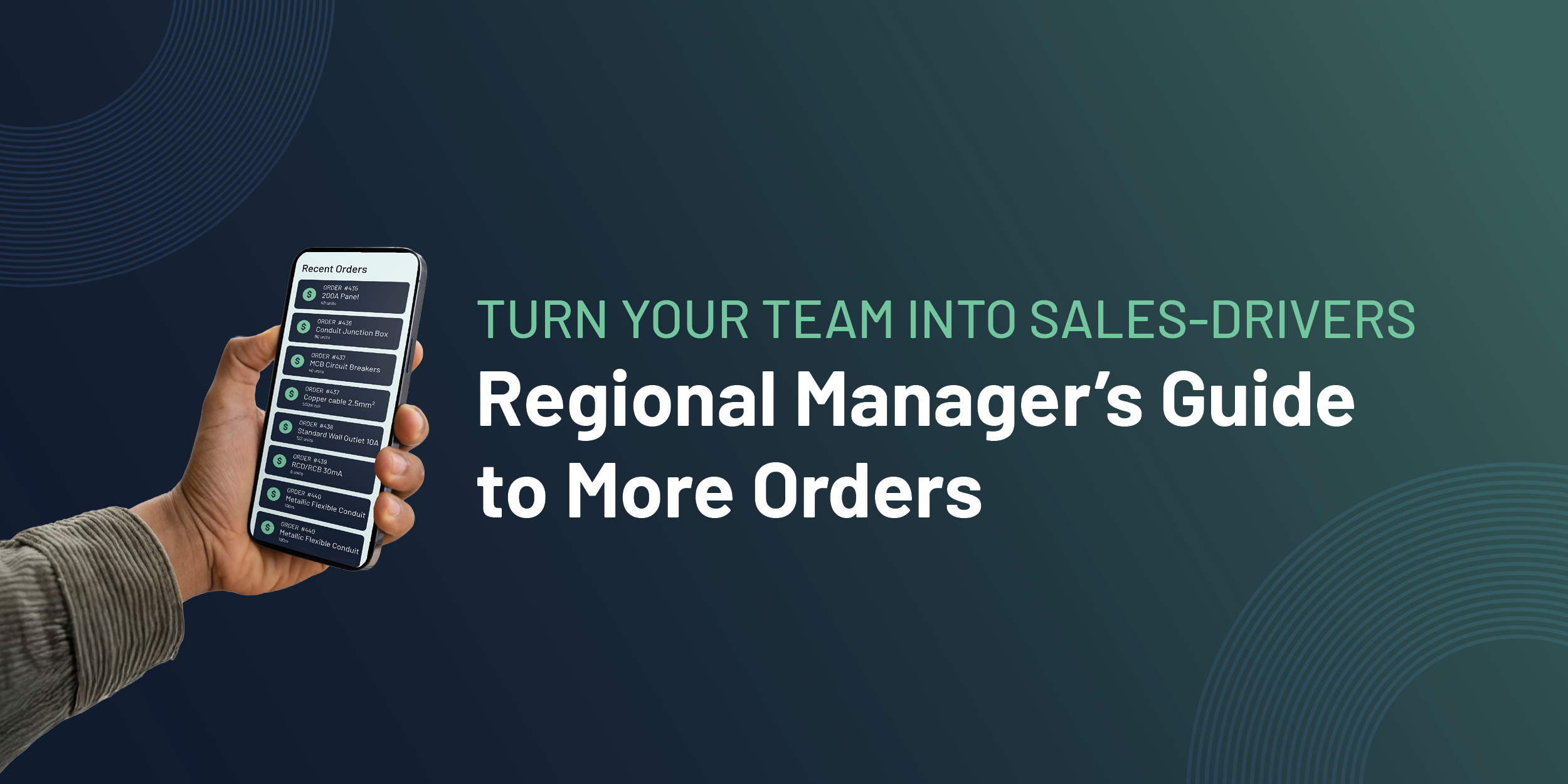
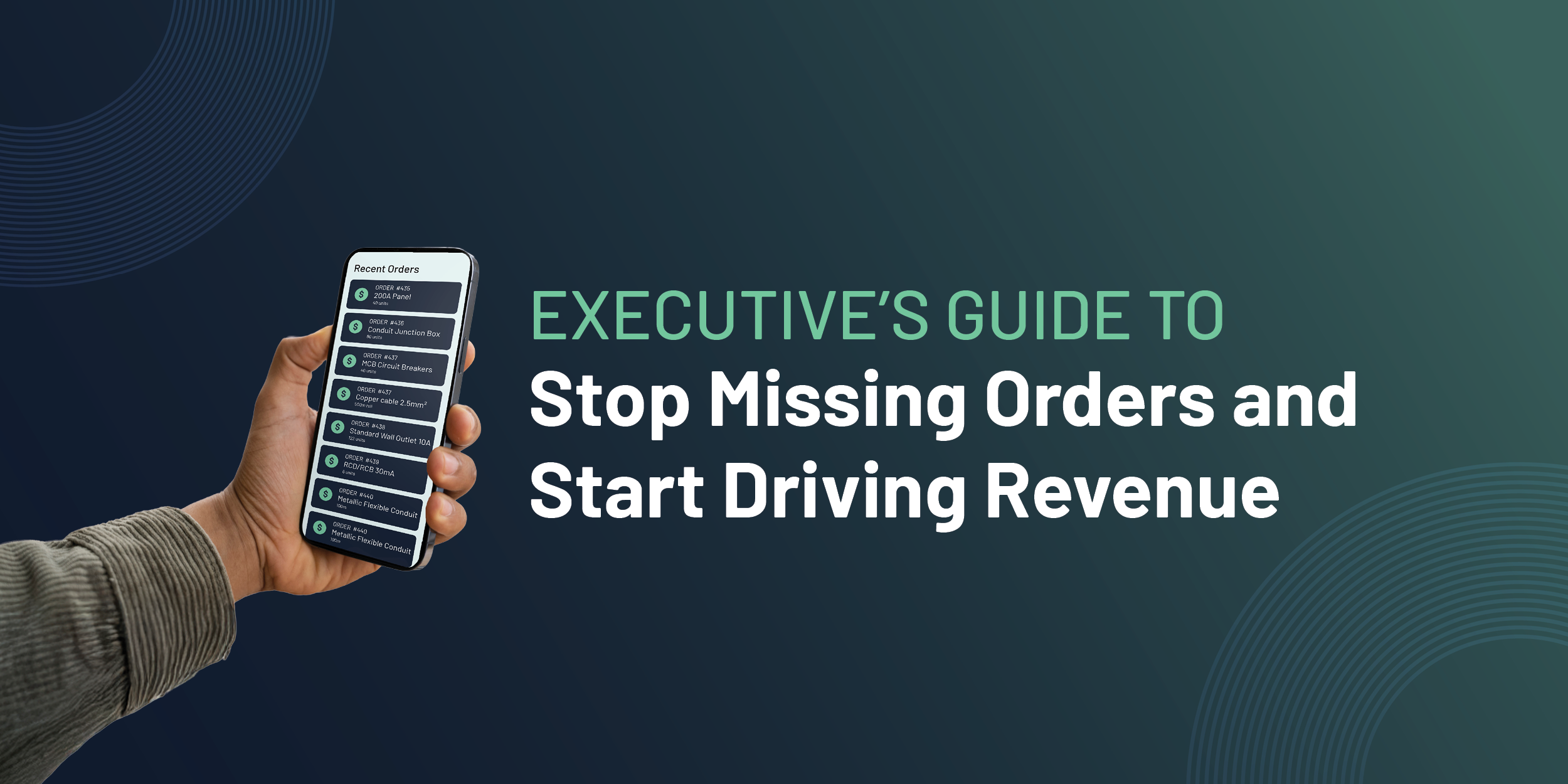
.png)
.png)

